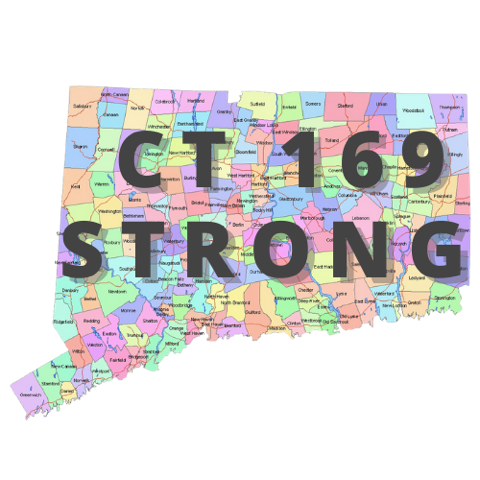
CT VIEWPOINTS by ALEXIS HARRISON FEBRUARY 17, 2021
“Talent and employers are looking to locate in urban centers that have the density and the activity and the culture and the arts that make them an exciting place to be,” said Hartford Mayor Luke Bronin. “Connecticut’s old model of suburban office parks and bedroom communities is not what’s attractive either to employees or employers today.”
I agree with Hartford’s mayor that we need to build up our cities in Connecticut.
I had the privilege of growing up in Fairfield, a bucolic coastal town in Fairfield County. My parents fell in love with Fairfield (both were Brooklyn born) and they worked hard (both my parents worked full time) to ensure they could raise their three daughters in a nice neighborhood. Before I was born, they lived in a condominium in Fairfield, but they were ready for something larger to support their growing family.
As we grew up, we would always make trips to the “city” – such wonderful memories — and that city wasn’t New Haven or Hartford, it was New York City. Whether it was to see the many museums and cultural centers or to take in theater, ‘the city’ was over an hour train ride away. Sure, there were trips to New Haven (where my father grew up) to visit a museum or Yale University’s campus, or to go for pizza, but it wasn’t a regular destination in our calculus. Even as a youngster, it occurred to me that Connecticut lacked its own “city” and we would look to NYC or Boston as our cultural hubs.
Over a year ago, Gov. Ned Lamont set an ambitious goal to double the population of our cities in the next quarter century. While an aspirational goal, it’s a trajectory that Connecticut needs. “Over the past five years, we’ve made a lot of steps in the right direction, and I think we need to keep our foot on the gas there,” Lamont’s economic development chief David Lehman said in 2020. “In Connecticut, we’ve got the suburban and rural thing covered. We need to work on the cities for the next 25 years.”
I agree with Bronin, Lehman and Gov. Lamont. Connecticut is a state without a city that serves as a unique cultural center and destination for those in state or out of state. No doubt growing the cities’ populations substantially is a major challenge — about 63% of moves in Connecticut in 2019 were outbound, which was one of the highest rates among the states, according to a recent study by moving company United Van Lines. The main reasons for moving out of Connecticut were retirement and job opportunities. Individuals aged 55 and older made up a majority of the state’s outbound moves last year. Over the past year, the COVID pandemic has partly reversed this longer-term trend as city folk seek single family homes in Connecticut’s suburbs and rural towns.
There are sweeping zoning proposals on the table in the 2021 legislative session. It appears that most proposed new laws are focused on shifting population from cities to suburbs and towns rather than re-populating cities. These proposed laws seek to remove much of the ability of local zoning boards to make land use decisions using the unique characteristics of land within their towns such as historic areas, environmental issues, wildlife habitat, topography and the already built environment. One such proposed law for example, seeks to expand the development of multi-family housing by making it ‘as-of-right’ within a half mile of all commercial and transit areas (which would comprise very large portions of many towns).
These land use laws if passed, would create profound, irreversible changes, and not in a good way: by ‘citifying’ of suburbs and rural areas, these towns would lose many of the features which make them desirable to begin with, while not helping cities achieve the population goals set forth by state leaders.
Before making fundamental changes to laws that would affect the permanent changes to that most finite of resources– the land– all stakeholders should be heard from, all unintended consequences should be studied and considered and all state goals concerning our beleaguered cities should be addressed.
Connecticut is a special state with distinct historical significance – whether it’s the Park City which is home to the legacy of PT Barnum or Hartford, our state’s capital which was the home to revered writer Mark Twain and so much more. While lawmakers are arguing if pizza should be our state food, the Elm City could seriously lack any appeal to young people or new college graduates.
As a state, we should be investing in our urban areas and making them more appealing to young people, the old, empty nesters and everyone in between. Without retaining the young, Connecticut will continue the ‘brain drain,’ not the ‘brain gain.’ Our future depends on it.
